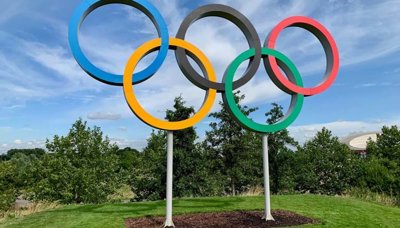Post-event reviews into the impacts of the London 2012 Olympic Games have supported the delivery of Olympic legacy projects and improved our understanding of the impacts of the Games.
Challenge
Large scale international sporting events, including the Olympic Games, can have significant economic, social and environmental impacts on their host cities. The International Olympics Committee (IOC) requires host cities to carry out a scientific Olympic Games Impact Study to measure success in delivering the Olympic Charter objectives of promoting ‘a positive legacy’ and encouraging “a responsible concern for environmental issues, [and] promote sustainable development in sport”. London was the first city to carry out such an impact study.
Solution
Professor Allan Brimicombe (University of East London) led three reports into the impact of the London 2012 games: pre-games (2010), games time (2012) and post-games (2015). The project team assessed data from across London between 2003 and 2013, covering 67 environmental, socio-cultural and economic indicators. These included carbon emissions, housing, employment, public transport, crime, poverty, physical activity and education.
The final report reflected changes in indicators over a 12 year period and attempted to determine the impact of the games with an overall sustainability analysis.

Image: @simoncon/Unsplash
Benefits
Policy Insight
The three-part assessment provided a comprehensive review of impact across multiple scales, including the six host boroughs. This allowed policymakers and other organisations involved in post-games legacy planning to understand emerging impacts as well as the overall trajectory of impact beyond the timespan of the games themselves. In addition to producing the assessments, Professor Brimicombe served as one of two special advisers to the Select Committee on Olympic and Paralympic Legacy.
The post-Game impact report, published in 2015, was oriented around the “Legacy Promises” made by the Department for Culture, Media and Sport and the Mayor for London, and informed the IOC’s understanding of the impact of staging the games.
The report found that East London gained a hugely-improved rail transport infrastructure which yielded considerable benefits in the post-Games legacy period, along with positive impacts across a range of other indicators such as reduced poverty and social exclusion. Although it concluded that the Games likely achieved its main sustainability objectives, it identified several areas for improvement and recommendations for further legacy work, e.g. improving water quality in the Lea.
The three-stage assessment helped evaluate sustainability targets and practices across the lifespan of the games, providing valuable insight for future games in other host cities. As one example, while the pre-Games study found no negative impacts as a result of preparing for the 2012 Games, including no adverse effect on London’s air quality from the construction of Olympic venues, the post-games report estimated that construction projects had produced 60% of all greenhouse gases released over the term of the Olympic project.
Better decisions
Attention to sustainability and impact in the London 2012 games underpinned later development and work by the London Legacy Development Corporation in regeneration and public engagement.
Public and government demand for a sustainable games delivery also resulted in changing practices and norms around construction industry sustainability. Professor Brimicombe suggested that the construction of the Athletes’ Village as (the first large scale, high density high-rise scheme to be developed to the Code for Sustainable Homes Level 4), potentially saved 13.8Mt of CO2 emissions. The Commission for a Sustainable London 2012 suggested that a target of diverting 90% of hazardous waste from landfill “helped to inspire a step change in the construction sector”.
London 2012 also prompted the development of BSI 8901 and ISO 20121 standards for event sustainability, which have since been used by other large-scale events such as COP15.
Combining data
The project only used existing datasets compiled by local and central government agencies to synthesise an overall analysis of impact in specific geographic scales, while also replacing or removing obsolete indicators between reports.
Further reading
The Society’s interview with Professor Brimicombe on the 2012 Olympics and their legacy is available here. The three reports can be viewed and downloaded: the Pre-Game, Games-time and Post-Game
A number of reports on the impact and legacy of London 2012 are available, including:
-
Select Committee on Olympic and Paralympic Legacy (2013). “Keeping the flame alive: the Olympic and Paralympic Legacy”
-
Cabinet Office / Mayor of London (2016). “Inspired by 2012:the legacy from the Olympic and Paralympic GamesFourth annual report – summer 2016”
-
Commission for a Sustainable London 2012 (2013). “Making a Difference: Post-Games Report”
-
National Audit Office (2012) “The London 2012 Olympic Games and Paralympic Games: post-Games review”
Share this resource
This is an open access article under the terms of the Creative Commons Attribution License (CC BY NC 4.0), which permits use, adaptation, distribution and reproduction in any medium or format, provided the original work is cited and it is for non-commercial purposes. Please contact us for other uses.
How to cite
Royal Geographical Society (with IBG) (2020). Assessing the impact of the London 2012 Olympics. Available at www.rgs.org/olympiclegacy Last accessed on: <date>
